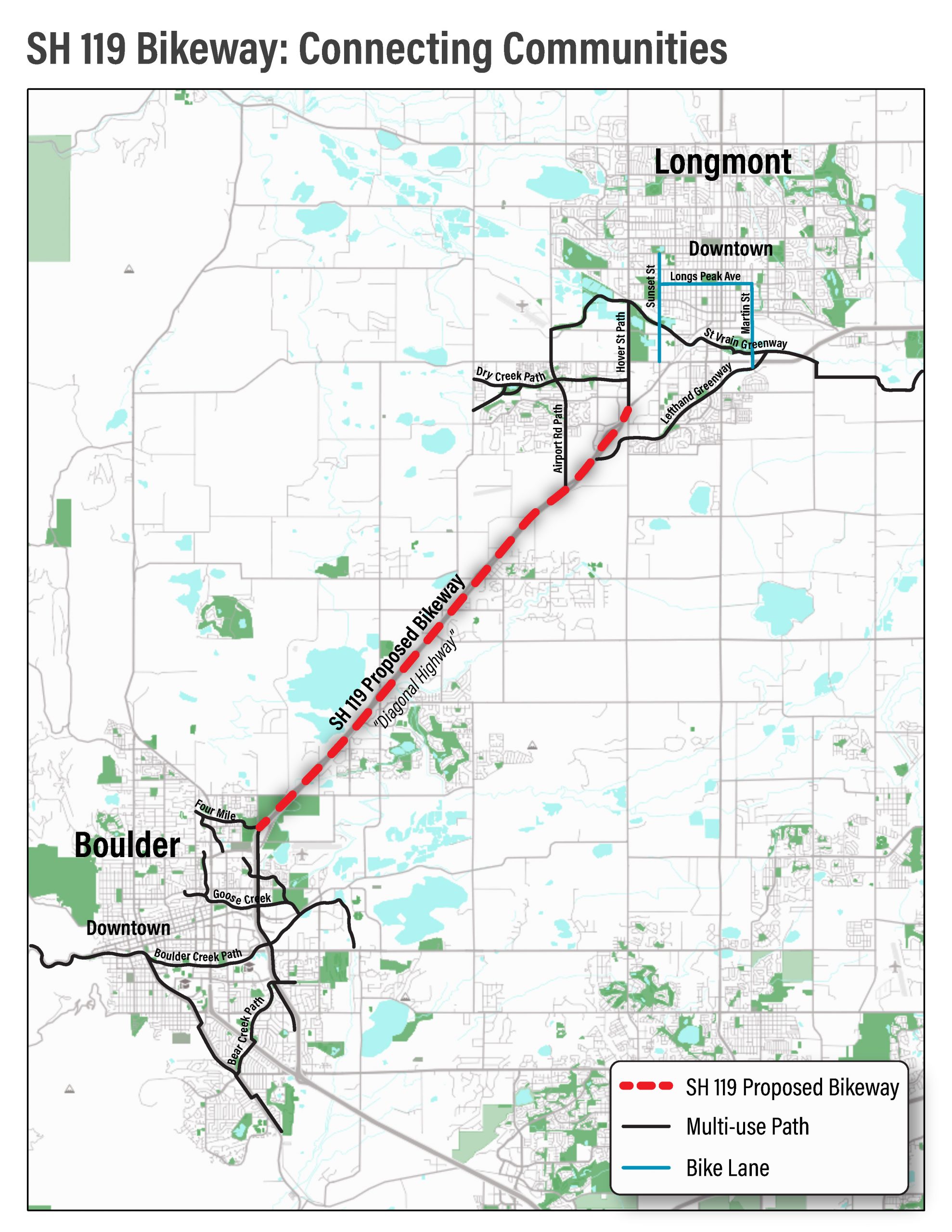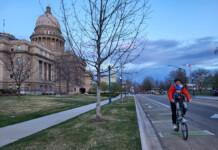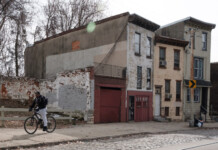Analysis of the Upcoming Diagonal Highway Project:
Editor’s Note: In 2024, Boulder County, Colorado plans to construct a shared use pathway from Boulder to Longmont. The path will connect Longmont, Niwot, Gunbarrel and the City of Boulder. Colorado Bike Law Attorney Brad Tucker analyzes the project below.
Seventeen-year-old Magnus White was a Junior US cyclocross national champion, competed in the Cyclocross World Championships in 2022, and was training for the Road World Championships this past summer. He was recognized as one of the future US talents in the sport. A former Boulder Junior Cycling Team member, big things were expected of Magnus, and he certainly expected big things of himself. He was diligently putting in the hard training sessions required to reach the top level of the sport.
Magnus was killed by a driver in Boulder this past summer when the driver veered off Diagonal Highway and into the shoulder at 55 miles per hour, striking Magnus from behind. The driver was arrested for vehicular homicide nearly half a year later. Police believe she fell asleep at the wheel, although her phone records show that she was texting just minutesbefore the crash. There is no amount of jail time that will give Magnus’ family the justice they deserve.
A 12-Foot-Wide Shoulder on Diagonal Highway Did Not Stop the Driver From Killing Magnus White
The stretch of road on which Magnus was killed was Colorado Highway 119, commonly referred to as Diagonal Highway, which connects Boulder to Longmont. It is a heavily used road by cyclists, as it serves as one of the only connectors between Boulder and the quieter, rural farm roads north of town. While the speed limit ranges between 60 and 55 miles per hour, the shoulder on Diagonal Highway is as wide as the car travel lanes: over 10 feet wide. It is almost difficult to imagine a driver managing to hit a cyclist in the shoulder of Diagonal, as the highway is straight and the view wide-open. Yet, clearly it is possible, and judging by the skid marks on Daigonal’s shoulder, drivers somehow lose control of their vehicles seemingly all the time. Distracted driving and fatigued driving account for a vast portion of traffic violence, and now there is one fewer cyclist among us because of one driver’s appalling choices.
Construction of the Diagonal Highway Off-Street Bike Path is Set to Begin in 2024
While it is very easy to become disheartened with our society’s view towards cyclists and the complete disregard for human life that so many drivers develop the second they get behind the wheel of a car, there are glimmers of hope. An off-street bike path sandwiched between the north- and south-bound lanes of Diagonal Highway is in the works.
Diagonal Highway has two lanes of travel going either direction. Currently, a large grass median (many dozens of feet wide) divides these north- and south-bound lanes, providing ample space for a bike path down the center. The proposed nine-mile-long concrete path, connecting Boulder and Longmont, will be 12 feet wide in most sections, and will travel underneath many of the existing cross streets that bisect Diagonal Highway, improving bike commute time and reducing chances of bike versus car collisions at these intersections. Other crossings will make use of pedestrian push-button signals.
Other Features of the Diagonal Highway Project
In addition, the project will incorporate a new Bus Rapid Transit line along the route, with the goal of reducing single occupancy vehicle traffic from Boulder to Longmont. Blue line buses will arrive every 15 minutes, and Orange line buses every 30 minutes. This bus line will have its own travel lane along certain sections of Diagonal in order to bypass congested traffic. Lastly, various intersections along Diagonal will be modified to reduce the risk of crashes and decrease car travel time from Boulder to Longmont. Construction is set to begin in the last half of 2024.
What the Project Gets Right
We are almost always in favor of off-street bike paths, as they offer the greatest safety benefits for cyclists compared to other bike infrastructure, such as painted bike lanes and protected bike lanes. However, not all off-street bike paths (shared-use paths) are equal in quality. Historically, and still currently in many municipalities, shared-use paths have been designed for low-speed bike travel (think Sunday beach cruisers) in order to accommodate pedestrians—these types of paths are narrow and incorporate unnecessary curves to reduce bike speed. Many off-street paths also follow winding creeks, and therefore do not take very direct routes. Some off-street paths do not take bike commuters in a useful direction at all. Many off-street paths are also far too narrow, creating conflict between pedestrians and cyclists. Lastly, bike infrastructure is often designed by engineers who haven’t touched a bike since they were nine years old.
The Diagonal Highway Bikeway project appears (no highly detailed plan is available at the time of this writing) to avoid many of these failures. It seems that it is going to use a highly functional, safe, and user-friendly design. Here is what the proposed projects gets right:
- Curves will be gradual, and it does not appear that unnecessary curves will be added to slow cyclists down.
- The path will be 12-feet-wide in most sections, and 16-feet wide at underpasses and other heavy traffic areas. This is wider than most bike paths in Colorado.
- The shoulders of the path will be mowed during summer so the usable width of the path will not be decreased in the summer months.
- Drainage and pumps will be used at underpasses to decrease the severity of flooding.
- The path will be snow-plowed in the winter.
- There will be lighting at all underpasses.
- All but one bike underpass has a clear line of sight.
- E-bikes will be allowed on the path.
- The path will be hard-surfaced, as opposed to gravel/dirt.
- The path will have many points of entry/exit.
- The path’s many underpasses bypass intersections, improving rider safety and speed of travel.
- The path does not attempt to hug the shoulder of Diagonal Highway, creating a safer and more enjoyable experience for cyclists and pedestrians.
- Cross street intersections, such as Jay Road, Airport Road, and 63rd Street, will rise overthe highway and bike path, improving safety and speed of bike commuters attempting to cross over Diagonal Highway.
- There appears to be great bike access to the new bus lines.
To Be Seen
As of this writing, we were not able to determine whether the existing bike lane/shoulder on Diagonal will be preserved. Preservation of the existing shoulder is critical for large, fast-moving group rides that may not be able to fit on a heavily trafficked shared-use path. This is also necessary during heavy rain events that will potentially flood underpasses, and in the winter when even regular snow plowing is likely to leave behind icy patches on the shared-use path for days at a time (ice melts quicker on more exposed roads/shoulders than on bike paths).
Potential Drawbacks and Shortcomings of the Diagonal Highway Redesign
Despite its many advantages, they didn’t get everything right. As with any road project, there is a budget to keep in mind, which limits what can be accomplished. As it relates to pure bikeway infrastructure, there are imperfections to the plan, and we acknowledge that some of them are a little “nit-picky.” Nevertheless, being mindful that we should always be looking to improve our bicycle infrastructure, here are some ways that the plan appears to fall short:
- A six-foot-wide lane of travel in either direction (the path is 12 feet wide in total) is not wide enough for cyclists to comfortably ride two-abreast when navigating curves, oncoming cyclists, and pedestrians.
- Unlike Diagonal Highway itself, there will be no separation between north- and south-bound lanes of travel for cyclists; there will be just one path with a line of paint down the center. This increases the chance of head-on collisions.
- There is no designated pedestrian path. Instead, cyclists will be expected to share the path with pedestrians. This is often a high source of conflict.
- The path will be concrete instead of asphalt, meaning there will be seams/cracks in the path every dozen-or-so feet. Concrete is also more slippery than asphalt.
- Ice will melt slower on concrete than on black or dark gray asphalt.
- While more durable, concrete is less forgiving to run and walk on than asphalt.
- While mostly straight, the path still makes significant deviations from a straight line, making it longer than the Diagonal Highway vehicle lanes, and therefore increasing the travel distance for bike commuters.
- There does not appear to be any type of barrier between Diagonal Highway and the shared-use path, meaning that drivers can still veer off the road and hit a cyclist or pedestrian. Such a collision occurred on Foothills Highway 157 (Diagonal Highway turns into Foothills Highway 157 once it reaches Boulder). In 2019, a driver veered off the road, crossed the grass median, and killed a cyclist on the off-street shared-use path.







